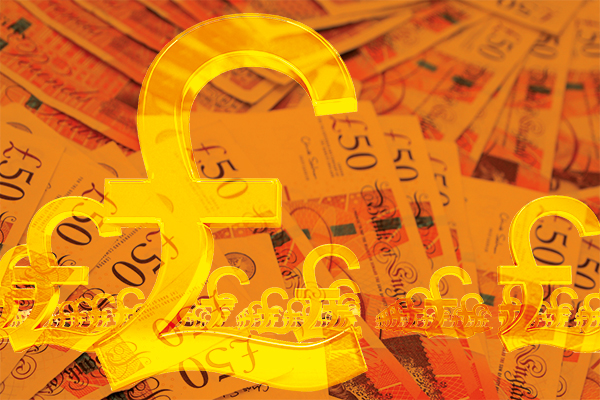The outlook for sterling in 2023
1st December 2022 15:49
by Graeme Evans from interactive investor
Sterling is now at its highest level since August, but many experts in the City remain sceptical and think the risks for the pound are skewed to the downside.

Sterling’s mini-budget recovery today picked up pace at near $1.23 as currency traders responded to the softening US interest rates outlook and improved risk sentiment.
The latest advance of 1.7% provided a big lift to UK-focused stocks in the FTSE 250 index, which outgunned London’s overseas-led blue-chip index with a 1.2% improvement.
Sterling is now at its highest level since August, having plunged to $1.035 on 28 September after Kwasi Kwarteng’s unfunded tax cuts in the mini-budget sparked alarm.
- Find out about: Transferring a Stocks & Shares ISA | Share prices today | Top UK shares
Concern over the UK’s fiscal position has eased since Rishi Sunak’s arrival in Downing Street, while the dollar has fallen back on speculation that four consecutive hikes of 0.75% have taken US interest rates to near the level needed to bring inflation under control.
Other factors boosting sterling have been the global flight towards riskier assets, along with the removal of UK political uncertainty following a legal ruling that a second Scottish independence referendum cannot take place without consent from Westminster.
Despite sterling’s recent strong performance, many experts in the City remain sceptical and think the risks for the pound are skewed to the downside.
They include UBS Global Wealth Management, where the base case is that sterling returns to $1.10 over the first quarter of 2023. The June forecast is $1.13, September’s is at $1.16, and the estimate for the year-end is $1.21.
UBS said: “The UK and the eurozone are struggling with a toxic mix of double-digit inflation and close to zero growth. Despite efforts by central banks to control inflation with higher rates, investors are unlikely to be drawn in further by the pound.
“A sustained recovery in sterling is only likely when inflation pressures ease, in our view.”
The bank’s forecasts point to inflation of 6% next year and a GDP contraction of around 0.5% as the UK looks set to be among the worst-performing countries in Europe and in the G10.
In contrast the US economy is likely to hold up a little better, particularly in the early part of 2023. The Bank of England and US Federal Reserve are both likely to begin lowering interest rates next year, which UBS believes should act as a catalyst for sterling to recover.
UBS adds that an unexpected brightening of the global economic outlook or sharp reversal in natural gas prices are scenarios where the pound could outperform its base case.
- Investment forecast for 2023: hot sectors, income and growth
- Is this the top investment idea for 2023?
- Warning to FTSE 100 shareholders as index nears six-month high
Capital Economics is also taking a pessimistic view on sterling’s outlook and believes that much of the benefit from the government’s more credible fiscal plans has now passed.
The consultancy said expectations for a 1.4% fall in GDP in 2023 compared to growth of 0.3% in the US points to renewed pressure against the dollar.
Its chief UK economist Paul Dales thinks that sterling will face pressure as the global recession proves to be more severe than widely anticipated, boosting safe-haven demand for dollars.
He is predicting a low point of $1.05 in mid-2023 before a rally to $1.22 by the end of 2024 as central banks transition towards interest rate cuts.
Dales added: “There are significant risks. On the upside, energy prices might fall back more swiftly and the economy may be more resilient, meaning that the pound strengthens.
“But sterling remains vulnerable to changes in risk appetite. So if the global economy performs even worse than we expect, sterling could weaken further.”
These articles are provided for information purposes only. Occasionally, an opinion about whether to buy or sell a specific investment may be provided by third parties. The content is not intended to be a personal recommendation to buy or sell any financial instrument or product, or to adopt any investment strategy as it is not provided based on an assessment of your investing knowledge and experience, your financial situation or your investment objectives. The value of your investments, and the income derived from them, may go down as well as up. You may not get back all the money that you invest. The investments referred to in this article may not be suitable for all investors, and if in doubt, an investor should seek advice from a qualified investment adviser.
Full performance can be found on the company or index summary page on the interactive investor website. Simply click on the company's or index name highlighted in the article.